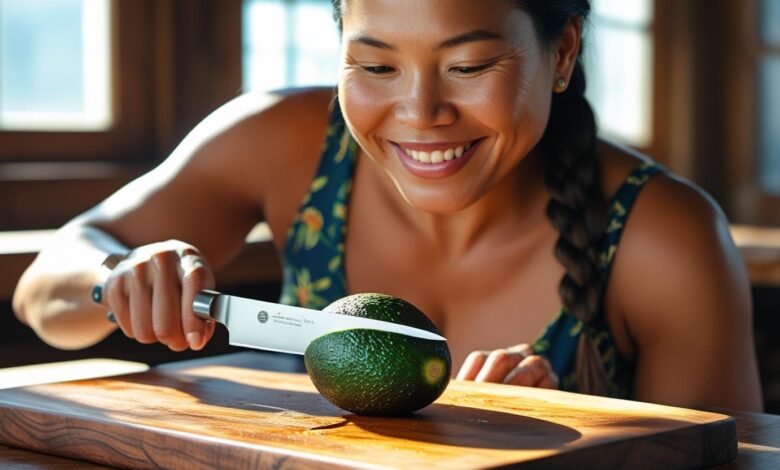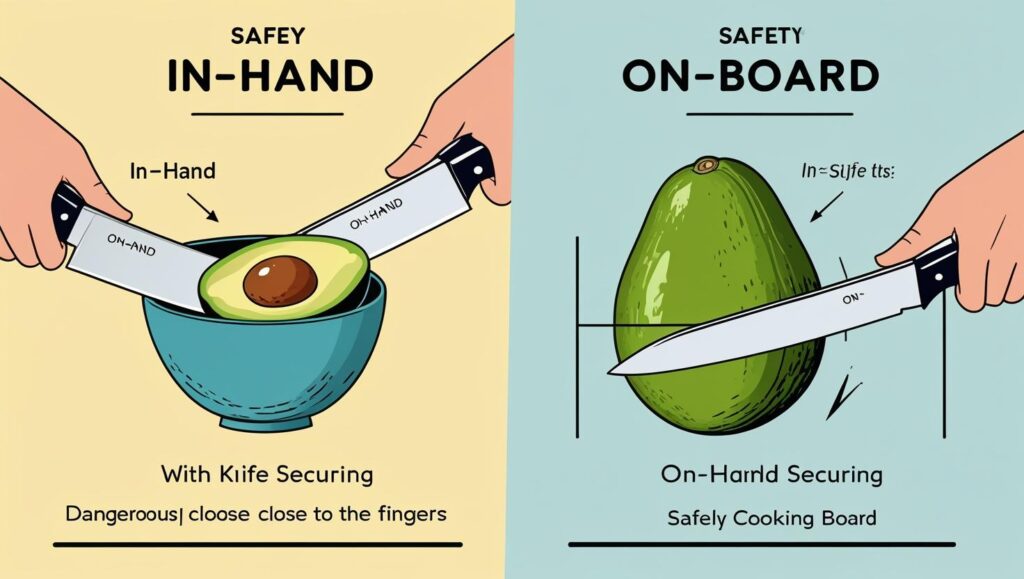The Rise of ‘Avocado Hand’: How to Cut an Avocado Safely, According to Surgeons
Thousands are sent to the emergency room yearly from "avocado hand," a severe injury caused by knife slips. Medical experts are urging the public to learn how to cut an avocado safely by using a cutting board, not their palm.

As global demand for avocados continues to surge, a concerning trend has emerged in emergency rooms worldwide: severe hand injuries sustained while preparing the popular fruit. Dubbed “avocado hand,” these preventable lacerations have prompted medical professionals and culinary experts to advocate for a safer method for how to cut an avocado, moving the common kitchen task from the palm of the hand to the stability of a cutting board.
The injury typically occurs when a knife, intended to slice through the avocado’s soft flesh, slips off the hard central pit and plunges into the holder’s hand or fingers. These are not minor cuts; they can result in significant damage to nerves and tendons, sometimes requiring specialist surgery and leading to long-term loss of function.
| Key Fact | Detail/Statistic |
| Estimated U.S. Injuries | An estimated 50,413 avocado-related knife injuries occurred between 1998 and 2017, with a dramatic increase in recent years. |
| A UK Surgeon’s Experience | One top plastic surgeon reported treating about four patients a week for “avocado hand” at a single London hospital. |
| Common Injury Mechanism | Stabbing or slashing injury to the non-dominant hand as the knife slips past the pit while holding the fruit mid-air. |
The Hidden Danger in the Kitchen: Understanding “Avocado Hand”
The term “avocado hand” gained prominence after the British Association of Plastic, Reconstructive and Aesthetic Surgeons (BAPRAS) noted a rise in patients with characteristic wounds. Simon Eccles, a former honorary secretary for the association, told The Times he was seeing a significant number of such cases, highlighting a widespread lack of public awareness about the risks.
Research confirms this anecdotal evidence. A 2019 study published in the American Journal of Emergency Medicine quantified the problem in the United States, finding that the incidence of avocado-related knife injuries correlated closely with the fruit’s soaring consumption. The study, which analyzed data from the National Electronic Injury Surveillance System, estimated over 50,000 such injuries over a 20-year period, with a sharp increase from 2013 to 2017.
“These injuries are exceedingly common,” Dr. Matt Aizpuru, a co-author of the study, has stated. The research found that women were disproportionately affected, accounting for about 80% of injuries, with the most common demographic being females aged 23 to 39. The injuries were most often sustained on the left hand, presumed to be the non-dominant hand used to hold the avocado.
Rethinking Tradition: The Safer Way for How to Cut an Avocado
In response to the growing number of injuries, hand surgeons, public health advocates, and culinary professionals are promoting a simple, much safer technique that eliminates the primary risk factor: holding the fruit while cutting.

The “Tabletop” or “Board” Method Explained
The expert-recommended method emphasizes stability and control. The American Society for Surgery of the Hand (ASSH) and other medical groups advise the following steps:
- Place the avocado on a secure surface, such as a cutting board. Do not hold it in your hand.
- Slice it lengthwise around the pit. Place your non-dominant hand on top of the avocado to hold it steady while you cut around the circumference.
- Twist the two halves to separate them.
- To remove the pit, place the half containing the pit flat-side-down on the board. Make a quartering cut, which should loosen the pit enough to be removed with your fingers or a spoon. Alternatively, for a ripe avocado, you can often push the pit out from the skin-side with your thumb.
Experts strongly advise against the “whack and twist” method, where a chef’s knife is struck into the pit to remove it. While popular in some cooking demonstrations, it introduces another high-risk opportunity for the knife to slip.
Why the Common “In-Hand” Method Fails
The fundamental flaw in holding an avocado while cutting is the lack of a stable base. The fruit’s soft, uneven texture, combined with its tough skin and rock-hard pit, creates an unpredictable surface. A knife can easily be deflected, and the force of the cut is then directed into the palm and fingers holding the fruit.
“The mechanism of injury is usually a stabbing injury to the non-dominant hand as the knife slips past the stone, through the soft avocado fruit,” wrote doctors in a case study in the Irish Medical Journal. “These stabbing injuries have the potential to cause significant neurovascular, tendinous and/or bony injuries.”
A Global Kitchen Safety Issue
The phenomenon of avocado hand is not confined to one country, mirroring the fruit’s international popularity. Reports from hospitals in the United Kingdom, the United States, Australia, and New Zealand have all highlighted similar increases in these specific kitchen injuries. This underscores that the issue is not one of inexperience but of a widely practiced, yet unsafe, technique.
Some medical professionals in the UK have even suggested that avocados carry warning labels, similar to those on other potentially hazardous products, to educate consumers on proper handling.
“People do not anticipate that the avocados they buy can be very ripe and there is minimal understanding of how to handle them,” Mr. Eccles stated in his interview with The Times.

Beyond the Knife: Experts Advise on Tools and Awareness
While proper technique is the most critical factor, culinary safety experts also point to the importance of using the right tools and maintaining general kitchen safety. A sharp knife is often safer than a dull one because it requires less pressure, reducing the chance of a forceful slip. However, for pitting an avocado, a spoon is the safest tool.
The broader public health message from this trend is a call for greater mindfulness in the kitchen. What may seem like a trivial, routine task can carry unforeseen risks.
As awareness grows, the hope is that consumers will adopt the safer cutting board method. This simple change in habit could prevent thousands of serious injuries, ensuring the popular fruit is a source of nutrition and enjoyment, not a reason for a trip to the emergency room.








